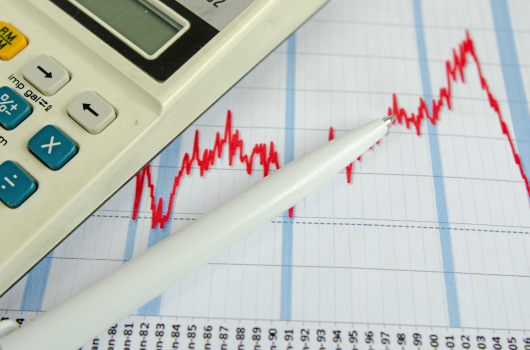Banking statistics for March 2024
Commentary by Miroslav Zámečník, Chief Advisor of the Czech Banking Association

February's data was already marked by solid year-on-year growth in loan drawdowns, most notably for businesses, but the recovery was also felt in households, where consumer loan drawdowns rose, even to their highest level in three years, while mortgages, despite the year-on-year recovery, are well below the boom levels of 2020-2021. Let's see how and whether February's loan demand was confirmed last month.
In the case of corporates, we look not only at credit and its structure, but also at how their deposits look as some indication of their financial health, allowing them to react quickly to a recovery in demand.
Non-performing loans once tended to rise even after the economy picked up, but the past few years have brought with them the phenomenon of a recession with no bankruptcies, no unemployment and only a minimum of bad loans.
Let's see if the March data confirm the hypothesis.
The year-on-year growth rate of total loans rose to 5% from 4.9% in February, while corporate loans also rose by a tenth of a percentage point to 10.7%, with consumer loans (+8.5%) and housing loans (+4.2%) unchanged in the year-on-year growth rate. Interest in mortgages is rising, and the number of new loans taken out is increasing, from CZK 10.3 billion a year ago to CZK 15.45 billion in March this year.
Although corporate loans in euros are no longer as much of a hit as they were at the time of the biggest interest rate differential compared to koruna loans, less than two years ago, even with the differential shrinking to 1.1 percentage points this March compared to the former six, they still account for more than half of new corporate loans (CZK 24 billion compared to CZK 22.6 billion). The "euroisation" is thus continuing despite the declining interest rate advantage (not only) for export-oriented companies.
In terms of the time structure of loans, according to CNB banking statistics, loans with a maturity of between one and five years recorded the most significant year-on-year increase of a high 22.3%, followed by loans with a maturity of over five years, which rose by 8.9%. Conversely, due to persistent pricing, there is less interest in more expensive loans with short maturities of less than one year, which grew by just under 3.4% year-on-year.
Development of the main segments of the credit market (year-on-year, %)
For deposits, the decline in their interest rate, which we have been observing since December last year, and a more optimistic consumer mood should lead to a gradual return of the savings rate to the long-term average.
The annual growth rate of household deposits has reached its low point in recent years in the first half of 2022, has risen almost every month since then and is now above 8% for the third month, which is still relatively high. The change in sentiment towards a greater willingness to spend has therefore not yet translated into a decline in deposits.
If we look at the graph of the year-on-year dynamics of deposits of non-financial corporations, there is much more volatility, characterised by ups and downs in the curve, often very sharp. At the moment we see a decline in the pace since December from 7.5% year-on-year to 5.4% in March.
Development of deposits in the main segments (year-on-year, %)
Non-performing loans - still close to the minima
The recession did not affect banks' loan portfolios as much as in previous cycles, thanks to the massive support that indebted the state. Simply put, the loan portfolio of banks operating in the Czech Republic remains as healthy as a turnip. In the case of non-financial corporations, the share of non-performing loans is at 2.59%, six hundredths of a percentage point below the absolute minimum. Households as a whole are only a tenth of a percentage point above the minimum caused by consumer credit and have been at this extremely favourable level for almost a full year. Mortgages continue to be paid off like clockwork, with the delinquency rate holding at 0.6% for twenty-two months.
Non-performing loans in main segments (%)
Note: the year-on-year comparison of stock figures (loan stocks as of the date, not new business for the month) is distorted by the "Sberbank factor", which lost its licence last spring, so all loans, uninsured deposits and some insured deposits that former Sberbank clients initially kept at home dropped out of the banking statistics. For April 2023 and onwards, Sberbank's loan portfolio with a nominal value of CZK 47.1 billion appears in the banking statistics again at a cost of CZK 41 billion, as it was taken over by another bank in one contract. In a year-on-year comparison, this distortion will be particularly noticeable for loans until April 2024.